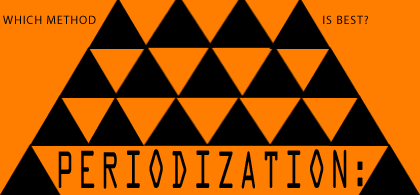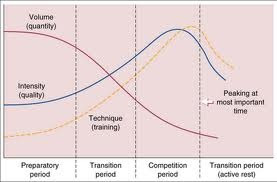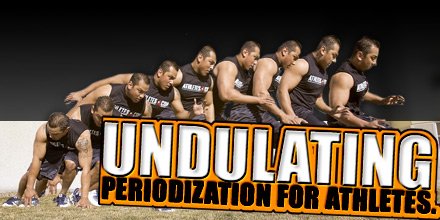Periodisation- hybrid models for team sports

When we examine the playing calendar of team sports such as soccer or rugby union, there is a relatively short preparation period compared to the long competitive period. Recall that the original periodisation models were all built around the reverse of this; i.e.. having a long preparation period before a competitive period. These models were conceived in the former Soviet and Eastern block countries for application in Olympic sports such as Track & Field, Weightlifting and even swimming.
In the case of an extended playing season for the football, rugby or racket player the limited pre-season requires attention to several components and as such a mixed model approach tends to be used where several components are trained simultaneously.
This blog looks at how APA use a hybrid model for team sports and racket sports that have short preparation phases and extended competitive seasons. The model we propose is a hybrid of a linear and undulating periodisation model.
Linear Periodisation

A linear periodisation model follows a gradual shift from high volume and low intensity to high intensity and low volume. An example in strength would be:
Week 1-4: 3 x 8RM
Week 5-8: 4 x 6RM
Week 9-12: 5 x 4RM
For young or inexperienced athletes a linear periodisation approach to strength and stamina is used during preparation periods. With our advanced athletes we don’t follow a Linear Periodisation model; it’s a concurrent training model. This is more commonly known as an undulating model.
Undulating Periodisation

An undulating model as proposed by Charles Poliquin uses weekly variations in load. It is quite common as an in-season model which fluctuates between 1-2 weeks of hypertrophy and 1-2 weeks of maximal strength/power. It allows the CNS to recover during periods where there is already high neural stimulus from a busy competition schedule.
I believe Dan Baker uses this form of week to week variation in strength sets and reps schemes to maintain strength and muscle mass using a form of weekly undulations in strength. (Undulating wave 12/8/10/6). In this example the weeks of 12 and 10 would represent hypertrophy weeks and the weeks of 8 and 6 would represent strength.
A daily undulating model as proposed by Rhea et al (2002) is a variation of the undulating model. The key difference between these two is that alterations of training volume and intensity are made on a daily basis as opposed to a weekly basis.
It is this daily undulating model that is more reflective of what we do at APA. But the key difference is rather than having a different regime for each day, we blend them in EVERY session.
So Rhea et al (2002) would do the following within a week:
Session 1: 3 x 8RM
Session 2 4 x 6RM
Session 3: 5 x 4RM
At APA we take this approach a stage further and would combine all three within the same session:
First part: 5 x 4RM
Middle part: 4 x 6RM
End part: 3 x 8RM
Preparation Phase:
Strength and Stamina: More Linear over time
During the main preparation phase there is a gradual shift of emphasis towards a build up of intensity and reduction in volume in both strength and stamina. To do this we just increase the bias towards one of the higher intensity/lower volume strength or stamina prescriptions using simple strategies such as doing 2 exercises for maximal strength in a strength phase rather than 1 when we are in a anatomical phase. Or for stamina, substituting one of the high intensity aerobic interval sessions with a anaerobic repeated sprint protocol.
Also just in simple terms, the overall density of a session will be less as we start to ramp up the intensity meaning we will do less volume of work per session. So I tend to reduce volume of strength and stamina work over the course of the preparation phase to allow me to build up the intensity towards the Anaerobic maximal strength and repeated sprints.
For example, during Strength sessions the total kilograms of weight lifting may drop from over 10,000 kg total in a session to only 4,000 kg in a high intensity low volume session. In a stamina session, we might progress as follows:
- Progression 1: High-Intensity Aerobic/Anaerobic session (120-140% MAS)- typically 5-12 x 6 x (15-40m run @ 80-90% effort: 15-20m jog recovery). This equates to 30-72 runs with a volume of 450m-2880m.
- Progression 2: High-Intensity Anaerobic session (200% MAS)- typically 3-5 x 4 x (5-25m run @ 100% effort: 5-25m walk). This equates to 12-20 runs with a volume of 60m to 500m.
By the way, the workouts above are well suited to team sports players such as rugby and football players who cover distances anywhere from 3 to 10 km per game. In Tennis, research reveals that among the top men, David Ferrer, who is known for his speed and agility, covers the most distance. Through three rounds of the 2015 Australian Open, Ferrer had run approximately 10,000 meters (6.2 miles).
On the other end of the spectrum, top-ranked Novak Djokovic had covered less than half that distance, somewhere between 4,000 and 5,000 meters through three rounds.
I usually plan for tennis players to typically cover at least 700m per set of Tennis.
For more information on the differences between sports check out this article HERE
Speed: More Reverse Linear over time
Speed on the other hand will increase in volume while maintaining intensity at 100%, with the exception of the first few weeks where you might start at 80-90% tempo runs. This means that we will build from 10m sprints up to 40m sprints, and increase the total distance of the speed sessions. (reverse linear periodisation).
This, of course, is a general guide. Look at it in terms of progressing in distance. As far as volume, these are estimates. Some athletes are workhorses; others are not. There is no magic formula for determining the perfect volume for a speed workout or workout period, and there are many other variables to consider in prescribing speed sessions. It should vary by athlete based on training age, experience, skill, etc.
M: 8-10 x10m hills
Th: 8-10 x 15m hills
Once athletes have begun to improve:
M: 8-10 x 20m hills
Th: 8-10 x 20-30m acceleration development on flat surface
Once proficiency is shown:
M: 8-10 x 30m
Th: 4x30m, 3-4 x 40m
Once athletes have developed consistency in their acceleration development:
M: 10 x 30m
Th: 6-8 x fly 15′s with a 20m buildup
Choices from here vary by sport. Non-track coaches will likely stick with a format along these lines. Remember, you don’t always have to move up in distance; you can do repeat 10′s, 20′s, etc. Make it specific to your sport. In fact, you should move around in volume, distance, and intensity so that athletes do not adapt and become stagnant in their training.
If athletes aren’t going to maintain an all-out sprint for more than 15-20m, spend the bulk of time on various components of acceleration development, speed endurance, and some VMax work:
Monday: (Acceleration work) 5x10m, 5x20m, 5x30m (full recovery)
Thursday: (SE) 2 sets of 6x25m with 1 min rest between reps, 5 min between sets
Do a VMax workout every 3 or 4 workouts.
Pre-competition Phase:
Stamina: More Reverse Linear over time
During the pre-competition period, the strength and speed will be maintained (high intensity but low volume) but we will have increase in volume in stamina as we look to endure the anaerobic qualities of speed, strength and power. Of course this won’t be the first time that the athlete has been exposed to speed, strength or even power endurance, but until now it would not have been the focus.
It would have perhaps been a maximum of one of the main conditioning workouts for stamina such as a speed endurance repeated sprint endurance session. Perhaps we would have some some strength and power endurance as part of a finisher in our strength workout. However, it would not have been the main focus.
But come pre-competition, I like to make power endurance the main focus and usually assign up to 3 workouts a week to this form of conditioning. Below is an example using barbell resistance training.
Power Endurance Development:
3 x (20-sec work, with 20-sec rest between sets), and 1-minute between exercises
High Pull from Thigh
Power clean
Squat to Overhead Press
Squats x 20 reps in 20-sec, with 1-minute between sets
Plank Combo – Left, Right & Front
Skydiver (Prone AW – Scap Retractions)
Competition:
There are a couple of approaches which could work here:
1. A weekly undulating model– as proposed by Charles Poliquin which uses weekly variations in load. It is quite common as an in-season model which fluctuates between 1-2 weeks of hypertrophy and 1-2 weeks of maximal strength/power. It allows the CNS to recover during periods where there is already high neural stimulus from a busy competition schedule.
2. A daily undulating model– which uses variations in the same week. This is something we use quite a lot with Tennis players where we will plug in a session which combines Strength and Power a couple of times a week. Or you can have one session which focuses on a strength and one which focuses on power.
The key with in-season programming is to have your ‘benchmark’ levels of performance that you can hold your athlete or team accountable to. As long as they stay within an agreed percentage of peak performance you can be satisfied the in-season programme is working.
Depending on what the athlete needs you can assign a certain number of workouts per month that need to be completed in a given component of fitness and leave it to the athlete to manage when they get them done.
Hope you have found this article useful. Remember,
- If you’re not subscribed yet, click here to get free email updates, so we can stay in touch.
- Share this post using the buttons on the top and bottom of the post. As one of this blog’s first readers, I’m not just hoping you’ll tell your friends about it. I’m counting on it.
- Leave a comment, telling me where you’re struggling and how I can help
